Version 7.9.2
Advanced Automation settings
Automation
An “automation” is a chain of events that runs when triggered by starting conditions you define. An automation is created by combining triggers, conditions and actions. The Client Automation System is a feature of the Agentcis application that allows users to automate actions such as emails, tasks and SMS. This feature allows users to work more efficiently and reduce the number of manual chores they are currently performing, therefore saving a lot of time and effort and thereby boosting productivity at work.
With the new and improved automation settings, users can create even more automation with more triggers.
Note: The automation feature is only available in our premium subscription plan.
Automation Settings
To add Automation
Step 1: Go to settings and click on Automation Settings

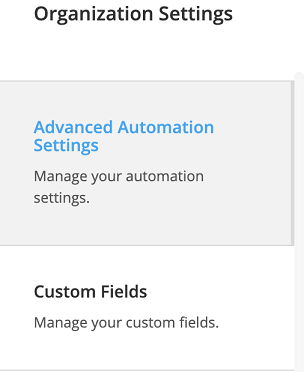
Step 2: Click on the Add button

Step 3: Set a name for the Automation and select the related office.
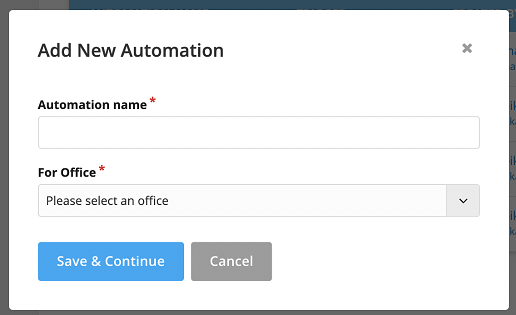
Note: This will create an Automation Draft
Step 4: Select a trigger for the Automation or you can even search for the trigger. This specifies when the automation will take place. You can further learn about Automations triggers here

Step 5: Input further information regarding the trigger. For instance if you select the trigger, Contact’s birthday, the system will ask if you want to schedule it on the same day or earlier.

Step 6: Click on Save and Next
Step 7: Now, you either select conditions or actions. Conditions are optional and act as a filter for the trigger. If you want to add Conditions click on conditions, select the conditions you would like to apply, add required filters and click on save and next.
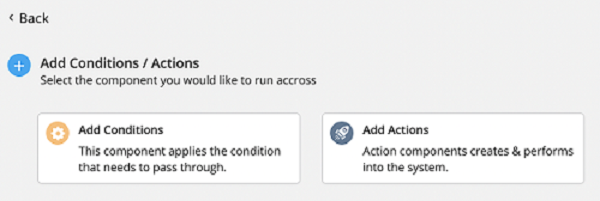
Note: The stages of automation flow are shown on the left side. You can add stages through this as well.

Step 8: Add Actions and select the actions that you want to perform. Actions can be creating and assigning tasks to users, sending new emails and new SMS form the automation process when the action applies.
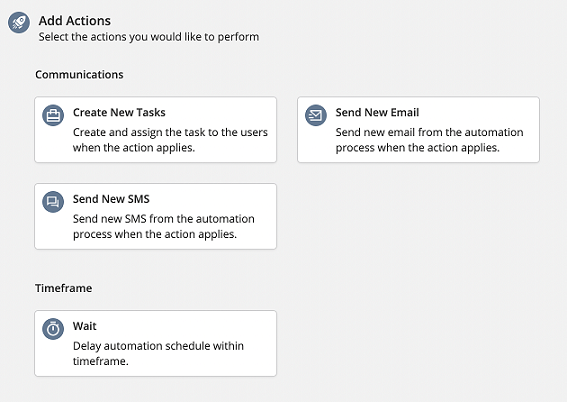
Step 9: After creating and adding the actions such as tasks, emails and SMS, click on save and next. You can add multiple tasks, emails and SMS within the action.
Step 10: You can also delay the action by selecting the wait action which allows you to schedule the action for a later time.
Step 11: Steps 7 to 10 can be repeated as many times as required
Step 12: You can activate or deactivate the automation
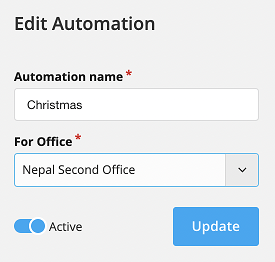
Types of Automation Triggers
An automation trigger is a one-time input that initiates the execution of a pre-programmed procedure. In a sense, an automation trigger is the initial step in the automation process.
A trigger is an event which specifies when the automation will take place. There are two types of automation triggers:
Date Based: The "Date-based" automation trigger lets you start an automation based on a contact's date field. You can choose to start the automation before, or on the date displayed in their field. Use this trigger to create automations based on event dates, such as birthdays, visa expiration dates or subscriptions.
Action Based: Additional features are required to implement automation depending on a contact's activities. Action based triggers might include things like form submissions, new lead forms, and so forth.
Automation triggers can be further segregated into 4 different aspects; Contact, Application, Interested Services and Others.
Contacts
- Contact’s Birthday (Date Based)
- Contact’s Rating Change (Action Based)
- Contact’s Status Change (Action Based)
- Contact’s Field Change (Action Based)
- Contact’s VISA Expiry Date (Date Based)
- New Contacts Added (Action Based)
Applications
- Application’s Start Date (Date Based)
- Application’s End Date (Date Based)
- Application Field Change (Action Based)
- Client Payment Installment Date (Date Based)
- Application Stage Change (Action Based)
- New Application Added (Action Based)
Interested Services
- New Interested Service Added (Action Based)
- Interested Service Status Changes (Action Based)
Others
- Lead Form Is submitted (Action Based)
- On this Day (Date Based)
